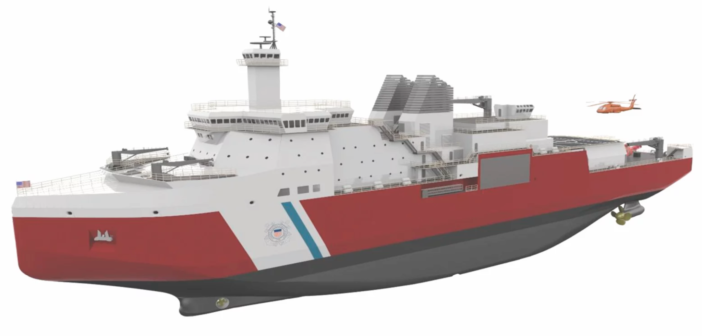The U.S. Coast Guard announced that Seattle will be the home for its three new 460'x88' polar security cutters (PSC). The Coast Guard is the nation’s lead agency responsible for providing assured surface access in the polar regions.
The Coast Guard conducted a detailed analysis to identify locations that could accommodate the PSC. Based on operational and logistical needs, Seattle was determined to be the appropriate homeport for the first three PSCs. Seattle will support the U.S.’s ability to conduct national missions, respond to critical events, and protect U.S. presence in the high latitudes.
“I am pleased to announce that Seattle, Washington will be the home of the Coast Guard’s new polar security cutters,” Adm. Karl L. Schultz, commandant of the U.S. Coast Guard, said in a statement announcing the award. “The Pacific Northwest has been the home of our icebreaking fleet since 1976, and I am confident that the Seattle area will continue to provide the support we need to carry out our critical operations in the polar regions.”
On April 23, the Coast Guard and Navy announced the award of a $746 million contract for the design and construction of the Coast Guard’s lead 460'x88' PSC to VT Halter Marine, Pascagoula, Miss.
The initial contract is for engineering and detail design of the PSC class as well as procurement of long lead-time materials and construction of the first ship. If all three PSCs are built, th full program could be worth $1.9 billion. The first PSC is scheduled for delivery in 2024, the second in 2025, and the third has an estimated delivery date of early 2027.
The shipyard is teamed with Technology Associates Inc. (TAI) as ship designers, ABB/Trident Marine for its azipod propulsion system, Raymarine for command and control systems integration, Jamestown Metal Marine for the joiner package, and Bronswerk for the HVAC system.
For over two years, New Orleans-based TAI has participated in the Coast Guard’s Heavy Polar Icebreaker Industry Study. The ship design is an evolution from the mature current Polar Stern II design and construction. During the study, TAI incrementally adjusted the design and conducted a series of five ship model tank tests to optimize the design.
Caterpillar‘s diesel-electric package will contain the vessel’s main engines, producing over 45,200 hp. The PSC will be capable of breaking ice 6' to 8' thick. The new cutter will be able to accommodate 186 personnel comfortably for an extended endurance of 90 days.
The Coast Guard’s long drive to recapitalize its icebreaking capability took a major step forward with the award of the contract. The PSCs will support a wide range of Coast Guard missions including search and rescue, maritime law enforcement, environmental response, and national defense missions.




